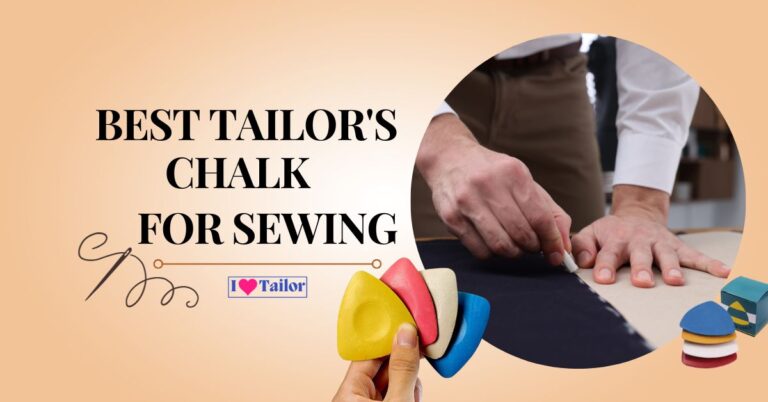Advanced Tailoring Techniques for Modern Tailors
In the ever-evolving world of fashion, the role of a tailor has transformed dramatically. With the advent of new materials, tools, and methodologies, the art of tailoring has reached new heights of creativity and precision. This comprehensive guide delves into the latest Advanced Tailoring Techniques that are essential for every modern tailor seeking to excel in this dynamic industry.
What is advanced tailoring?
Advanced tailoring represents the pinnacle of the tailoring craft, where traditional techniques meet modern innovation. It’s a harmonious blend of age-old skills and cutting-edge technology. This approach to tailoring is characterized by its precision, customization, and use of novel materials and methods.
Think 3D body scanning for flawless fits, laser cutting for immaculate precision, and sustainable fabrics that echo today’s environmental consciousness. Advanced tailoring isn’t just about creating a garment; it’s about crafting a personalized experience that embodies both the tailor’s artistry and the wearer’s unique style.
This modern take on tailoring shapes garments that are not only aesthetically pleasing but also functionally superior, reflecting the ever-evolving fashion landscape.
Top 10 Advanced Tailoring Techniques
Top 10 Advanced Tailoring Techniques that are essential for any contemporary tailor seeking to excel in their craft. These techniques not only honor the rich heritage of tailoring but also embrace the new possibilities brought forth by technology and modern materials.
1. Precision Laser Cutting

The traditional scissors give way to state-of-the-art laser cutting technology. This modern method ensures unparalleled precision, perfect for intricate patterns and designs, making every cut clean and exact.
2. 3D Body Scanning

Tailoring is all about the perfect fit, and 3D body scanning technology revolutionizes this aspect. It offers accurate and detailed body measurements, ensuring that each garment is perfectly contoured to the client’s physique.
3. Eco-Friendly Fabric Selection

The modern tailor is also an environmentally conscious one. Choosing sustainable materials like organic cotton, bamboo fibers, and recycled textiles not only reduces environmental impact but also adds a unique story to each garment.
4. Hybrid Stitching Techniques

Marrying traditional stitching with contemporary methods creates a fusion of styles. Techniques such as the classic French seam or hand-stitched linings are combined with modern approaches to add both durability and a touch of modern elegance.
5. Digital Pattern Design

In the digital age, tailors use sophisticated software for pattern design. This technology allows for greater precision and consistency, enabling complex and unique designs to be realized with ease.
6. Customized Embroidery

Embroidery in tailoring has evolved beyond mere embellishment. Modern tailors offer bespoke embroidery options, allowing for personalization that transforms a garment into a one-of-a-kind piece.
7. Thermal Fabric Bonding

Innovative thermal bonding techniques are being used to create stronger, more resilient seams. This method is especially beneficial in tailored garments that require flexibility and durability, like activewear.
8. Enhanced Color Retention

Preserving the color and vibrancy of fabrics is crucial. Modern tailors utilize techniques to improve color fastness, ensuring that garments maintain their brilliance through wear and washing.
9. Inclusive and Adaptive Design

Tailoring today is inclusive. Modern techniques include adaptive tailoring to accommodate the needs of individuals with disabilities, featuring elements like magnetic closures and adjustable components for ease of use.
10. Virtual Fittings

The integration of virtual fitting technology marks a significant advancement. Clients can try on garments digitally, allowing for adjustments to be made before the final piece is crafted, ensuring a perfect fit and high client satisfaction.
How can I improve my tailoring skills?
Improving your tailoring skills involves a blend of continuous learning and practical experience. Start by mastering the basics of sewing and garment construction, then gradually explore more complex techniques. Attending workshops or enrolling in tailoring courses can provide structured learning and exposure to different styles and methods.
Practice is key, so work on diverse projects to refine your skills. Keeping up with the latest fashion tailoring trends and tailoring technologies is also crucial. Networking with other tailors and seeking feedback on your work can provide valuable insights and help you evolve your craftsmanship. Remember, patience and dedication are essential in the journey to becoming a skilled tailor.
FAQs
What are tailoring techniques?
Tailoring techniques are the specific methods and skills used in crafting garments. They involve precise cutting, fitting, sewing, and finishing to create well-fitted, personalized clothing. These Advanced Tailoring Techniques range from traditional hand-stitching to modern digital methods like 3D printing and laser cutting.
What are the 3 categories of tailors?
The three categories of tailors are bespoke, made-to-measure, and ready-to-wear. Bespoke tailors craft fully custom garments, made-to-measure offer personalized fits with standard patterns, and ready-to-wear provide off-the-rack options with various sizes.
What kind of skill is tailoring?
Tailoring is a meticulous and artistic skill that involves precise garment fitting, cutting, and sewing. It requires a keen eye for detail, a creative design sense, and adeptness in handling fabrics and sewing techniques. This craft blends traditional methods with modern fashion trends.
How can a tailor attract customers?
To attract customers, a tailor can showcase unique, high-quality workmanship, offer personalized fittings, and maintain an engaging online presence. Networking locally and providing exceptional customer service also play key roles in building a loyal clientele.
Conclusion
In conclusion, the realm of advanced tailoring techniques is vast and ever-changing. By embracing new materials, adopting innovative techniques, adhering to sustainable practices, and continuously learning, the modern tailor can create garments that are not only stylish and precise but also ethical and innovative. This guide provides a comprehensive overview of the skills and knowledge required to excel in the art of modern tailoring.
Thanks!







